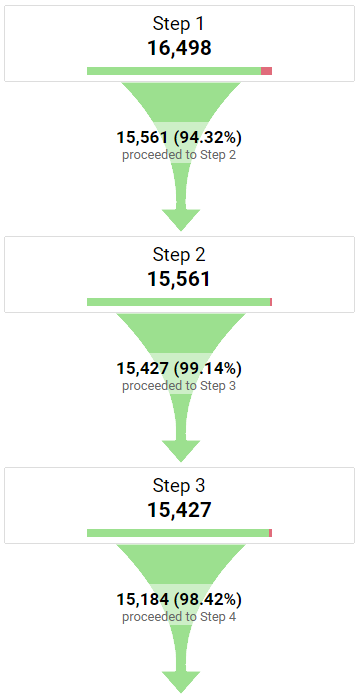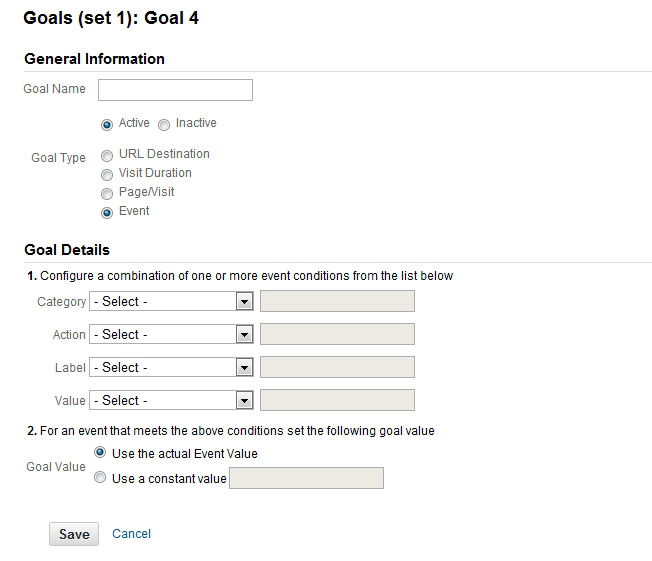Comprehensive Listing of What Data Is Google Analytics Goals Unable to Track
Debunking Google Analytics Limitations: Discover What Information Goals Can not Track
In the world of electronic analytics, Google Analytics stands as an effective tool that provides important insights right into internet site efficiency and user actions. From the details of customer interaction with dynamic content to the intricacies of cross-device customer journeys, these restrictions shed light on locations that may remain covered from typical analytics perspectives.

Individual Communication With Dynamic Content
User communication with vibrant content plays an essential duty in understanding user habits on web sites and optimizing the total user experience. Dynamic content describes elements on a page that can transform without the need for a full page reload. This includes interactive elements such as pop-ups, sliders, kinds, and videos that reply to customer activities in real-time. By tracking individual interactions with dynamic web content, web site proprietors can gain valuable understandings right into individual involvement, preferences, and behaviors.
Google Analytics uses various tools to track customer interactions with dynamic web content, such as occasion tracking and digital pageviews. Occasion monitoring permits you to keep track of particular user actions, like clicking a switch or seeing a video clip, providing information on exactly how individuals interact with dynamic aspects.
Cross-Device Customer Journeys
Just how can modern analytics tools track the facility courses customers take across several devices in their on-line trips? Cross-device individual journeys offer a considerable obstacle for monitoring and evaluating user behavior accurately. As customers engage with web sites or apps utilizing various tools such as tablets, desktops, and mobile phones, it comes to be important to understand exactly how they relocate in between these systems to enhance user experience efficiently.
Google Analytics deals with constraints in tracking cross-device user journeys due to privacy worries and technological constraints - what data is google analytics goals unable to track. While it can supply understandings right into specific tools' interactions, tracking a smooth user journey throughout multiple gadgets stays an obstacle. This restriction can result in incomplete information and fragmented user understandings, making it challenging for organizations to create a unified view of the client journey
To address this concern, businesses can utilize advanced analytics tools that use cross-device monitoring abilities, permitting them to obtain a more alternative understanding of user habits. By leveraging these tools, organizations can connect the gap in tracking cross-device user journeys and optimize their digital approaches for a seamless individual experience.
Offline Conversions and Attribution
As services navigate the challenges of tracking cross-device user journeys, another essential facet to consider is the realm of offline conversions and attribution in the realm of information analytics. While Google Analytics provides beneficial understandings into online customer behavior, it fails when it comes to tracking conversions that happen offline. This constraint postures a considerable challenge for services that have both online and offline sales networks.
Offline conversions, such as purchases made in physical stores or through telephone call facilities, are important to understanding the total customer trip. Without the capacity to associate these offline conversions to specific on-line interactions, organizations may battle to precisely measure the influence of their digital advertising and marketing initiatives.
To resolve this space, organizations can discover alternate services such as integrating CRM systems with on the internet analytics tools or making use of special coupon codes that can be traced back to on-line projects. By connecting the gap between online and offline information, companies can gain an extra detailed understanding of their customers' actions and enhance their general advertising and marketing techniques.
Individual Customer Recognition
In the realm of information analytics, the capacity to accurately identify private customers why not try this out throughout various online touchpoints is an important obstacle for companies looking for to personalize and optimize their advertising strategies. While Google Analytics offers important understandings right into individual actions and communications, it falls short in making it possible for the identification of specific people because of privacy concerns and technical restrictions. Google Analytics uses special identifiers such as cookies to track individual sessions and habits, but these do not correspond to identifying individual users in an individual feeling.

Data From Secure Pages
Regardless of the enhancing prevalence of safe and secure pages on internet sites, acquiring information from these encrypted sources offers a special challenge for digital analytics systems like Google Analytics. Secure web pages, shown by HTTPS in the link, secure information exchanged in between the user's web browser and the website's web server to ensure personal privacy and safety. While this security is important for safeguarding delicate info, it also presents limitations for tracking user behavior and gathering analytics data.
Google Analytics faces barriers in accumulating comprehensive details from safe and secure web pages as a result of the security protocols in location. Because of this, specific data points such as recommendation resources, keyword searches, and even some user interactions may not be totally recorded when customers access a website through a safe and secure connection. This constraint can affect the accuracy and completeness of the data evaluation, bring about voids in understanding individual behavior and preferences on secure web pages.
To navigate this challenge, electronic experts may require to explore alternate tracking methods or leverage other tools especially created to gather insights from secure pages. By adapting methods to suit these limitations, services can still acquire important analytics regardless of the restraints offered by encrypted links.
Verdict
In conclusion, Google Analytics has restrictions in tracking individual interaction with vibrant material, cross-device user trips, offline conversions, specific customer recognition, and data from secure pages. Despite its important understandings, Google Analytics may not supply a full picture of customer engagement throughout various touchpoints.
Individual communication with discover here dynamic content plays a crucial duty in comprehending customer behavior on websites and enhancing the total customer experience. By tracking user interactions with dynamic content, web site proprietors can gain useful understandings right into user interaction, choices, and behaviors.
Google Analytics utilizes one-of-a-kind identifiers such as cookies to track user sessions and habits, yet these do not equate to determining individual users in an individual sense.
As an outcome, particular information points such as referral resources, keyword searches, and even some individual communications might not be totally captured when users access a site via a secure connection.In final thought, Google Analytics has restrictions in tracking customer communication with vibrant web content, cross-device customer journeys, offline conversions, individual customer identification, and information from protected web pages.